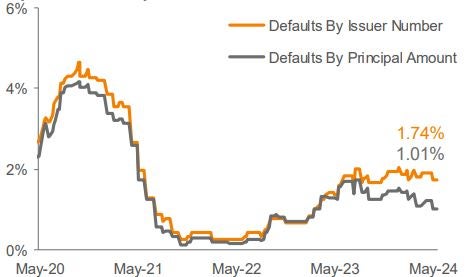
Weekly Notables
The overall tone was constructive across risk assets this week following the release of the highly anticipated CPI print, which showed inflation easing in April. This had a positive impact on the loan market’s performance, as the Morningstar® LSTA ® US Leveraged Loan Index (Index) returned 0.22% for the seven-day period ended May 16. The average Index bid price continued to move higher, closing out the week at 96.97.
In the primary market, opportunistic transactions continued at a healthy clip given the strong technical backdrop, while a few M&A-related deals were launched as well. MTD volume is already tracking nearly $30 billion halfway through the month. Net of approximately $15 billion of anticipated repayments that aren’t associated with the forward calendar, the amount of net new supply expected to enter the market now totals about $2.1 billion, versus net new supply of $8.1 billion last week.
While trading levels remained firm across all cohorts, performance was led by riskier credits, as BBs, Bs, and CCCs returned 0.22%, 0.20%, and 0.37%, respectively.
Demand for loans was strong across the measurable investor segments. CLO managers issued nine new deals, bringing the YTD tally to $74.2 billion. Retail loan funds experienced $481 million of inflows (Morningstar Direct), extending the streak of positive flows to four weeks and pushing the YTD figure to $5.6 billion (weekly reporting funds).
There were no defaults in the Index this week.




Source: Pitchbook Data, Inc./LCD, Morningstar ® LSTA ® Leveraged Loan Index. Additional footnotes and disclosures on back page. Past performance is no guarantee of future results. Investors cannot invest directly in the Index. *The Index’s average nominal spread calculation includes the benefit of base rate floors (where applicable).

